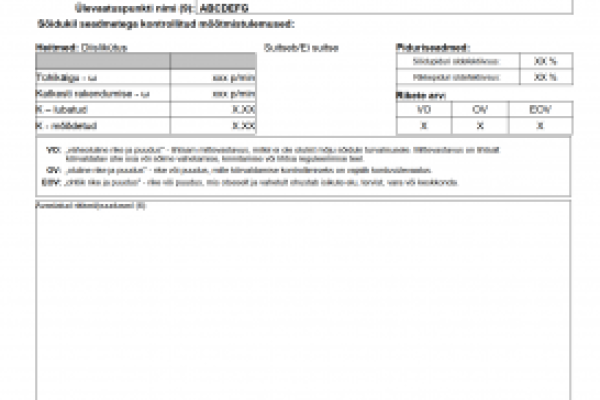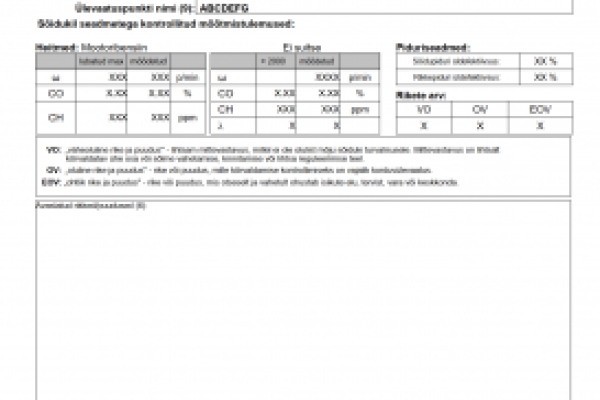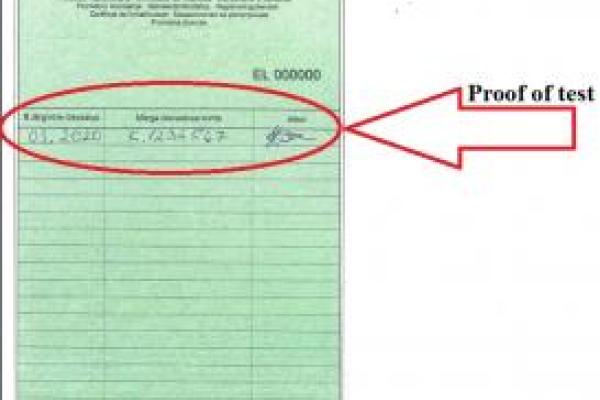General information
General overview
Once a vehicle passes a roadworthiness test, the inspection station that carried out the test issues a roadworthiness certificate. It also issues the proof of test, which is the month and year until the roadworthiness test is valid, the serial number of the roadworthiness certificate and the signature of the responsible inspector or Road Administration official added to the vehicle licence document. Vehicles that did not pass the roadworthiness test but where no dangerous defect was found will not receive a proof of test and can be used in traffic for up to 60 days following the test. Vehicle owners will have to correct the defect(s) and present the vehicle for re-testing by the end of this period.
Test frequency
| Categories or types of vehicles | First mandatory test | Subsequent tests |
|---|---|---|
| M1, L3e, L4e, L5e, L7e | Within four years after the date of first registration | Every two years then every year from the 10th year after the date of first registration |
| O1 | Within four years after the date of first registration | Every two years |
| M2 and M3 | Within one year after the date of first registration | Every year then every six months from the 10th year after the date of first registration |
| N2, N3, O2, O3 and O4 | Within one year after the date of first registration | Every year |
| N1, T and R | Within two years after the date of first registration | Every year |
| Vehicles of historic interest | Within four years after the date of issuing the historic vehicle certificate | Every four years |
Exemptions
L1e-, L2e-, L6e, racing vehicles, agricultural mobile machinery
Responsible authorities
Roadworthiness certificates and proofs of test are issued by testing centres authorised by the Estonian Road Administration , which also issues proofs of test.
Websites
www.mnt.ee (Estonian, English, Russian)
Major changes
As of 01/09/2017, no proof of test is issued for vehicles but that did not pass the inspection but where no dangerous deficiencies were found. This allows such vehicles to circulate in traffic in Estonia for up to 60 days. As of 01/01/2018, M1 and N1 vehicles may be presented for inspection on any date that a test centre is open. Before this date, vehicles had to be presented for testing on a date determined by the last number of their registration plate.



